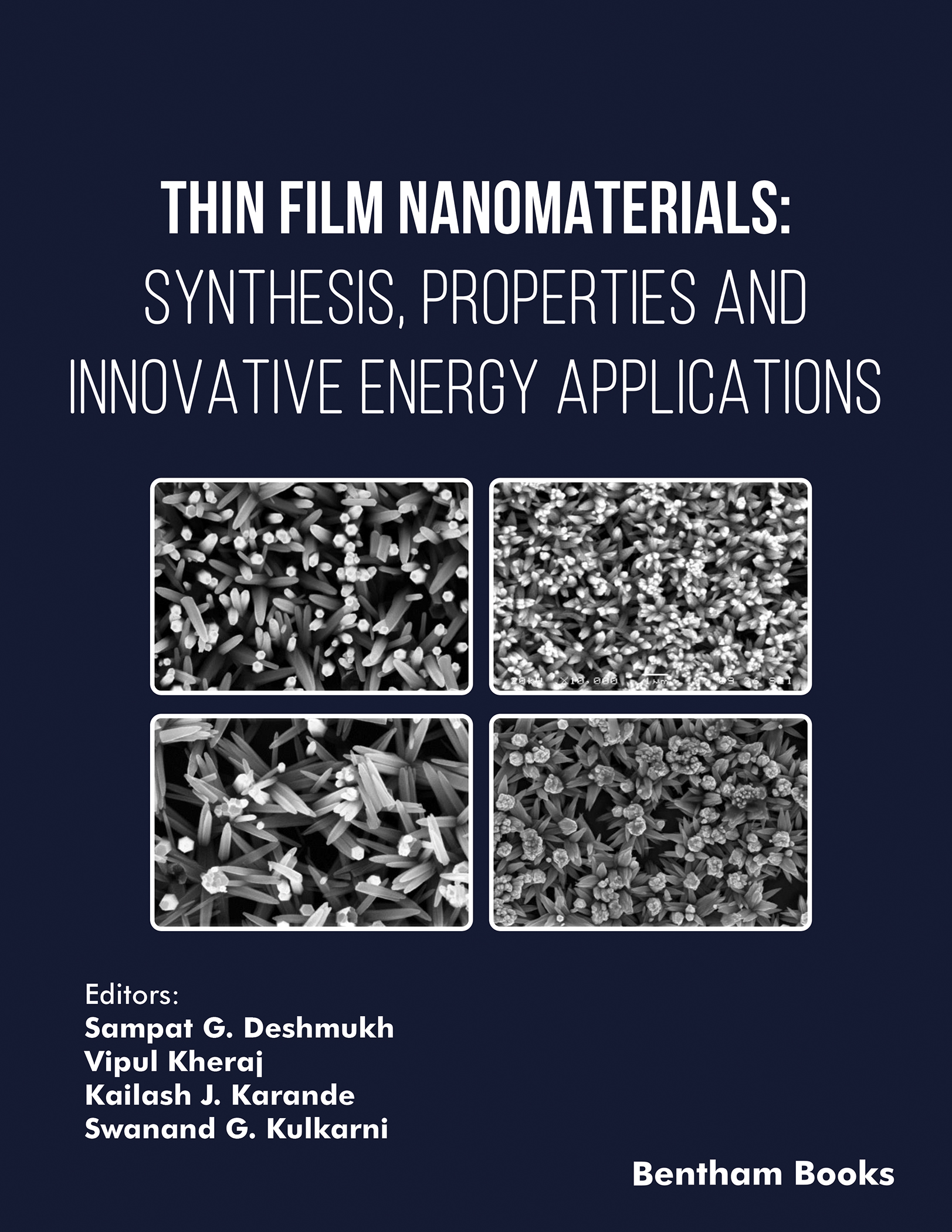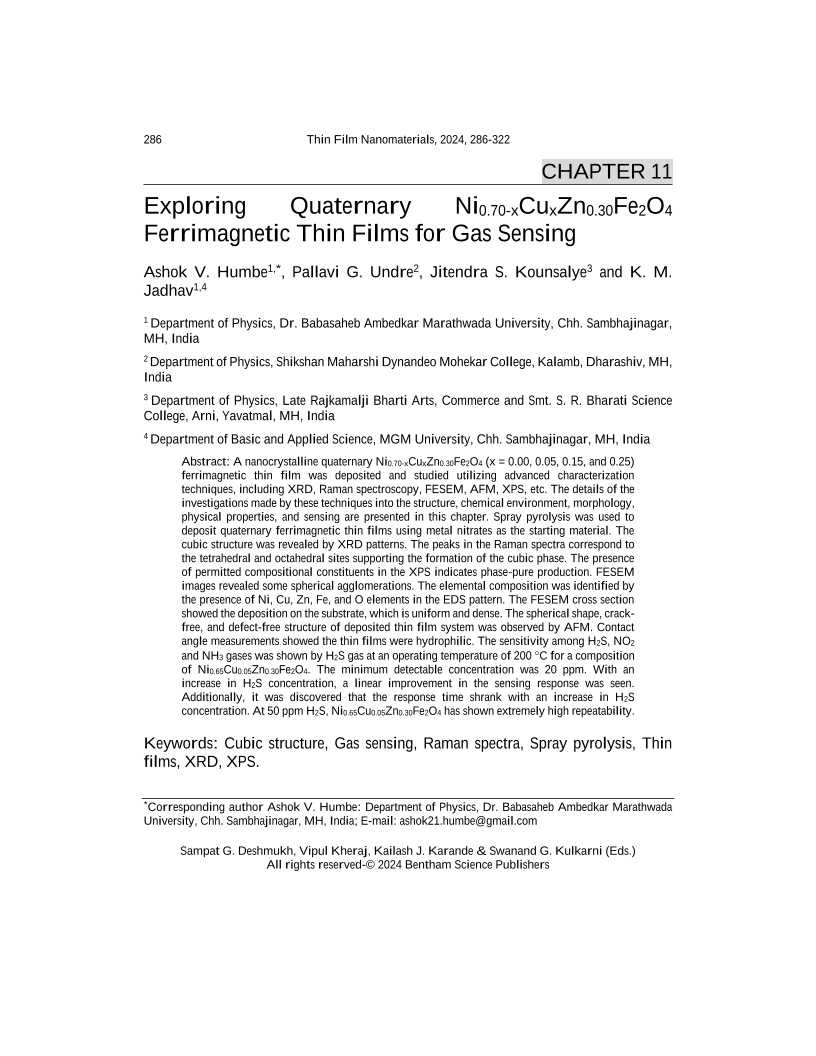- Home
- Books
- Thin Film Nanomaterials: Synthesis, Properties and Innovative Energy Applications
- Chapter
Exploring Quaternary Ni0.70-xCuxZn0.30Fe2O4 Ferrimagnetic Thin Films for Gas Sensing

- Authors: Ashok V. Humbe1, Pallavi G. Undre2, Jitendra S. Kounsalye3, K. M. Jadhav4
-
View Affiliations Hide Affiliations1 Department of Physics, Dr. Babasaheb Ambedkar Marathwada University, Chh. Sambhajinagar, MH, India 2 Department of Physics, Shikshan Maharshi Dynandeo Mohekar College, Kalamb, Dharashiv, MH, India 3 Department of Physics, Late Rajkamalji Bharti Arts, Commerce and Smt. S. R. Bharati Science College, Arni, Yavatmal, MH, India 4 Department of Physics, Dr. Babasaheb Ambedkar Marathwada University, Chh. Sambhajinagar, MH, India
- Source: Thin Film Nanomaterials: Synthesis, Properties and Innovative Energy Applications , pp 286-322
- Publication Date: July 2024
- Language: English
A nanocrystalline quaternary Ni0.70-xCuxZn0.30Fe2O4 (x = 0.00, 0.05, 0.15, and 0.25) ferrimagnetic thin film was deposited and studied utilizing advanced characterization techniques, including XRD, Raman spectroscopy, FESEM, AFM, XPS, etc. The details of the investigations made by these techniques into the structure, chemical environment, morphology, physical properties, and sensing are presented in this chapter. Spray pyrolysis was used to deposit quaternary ferrimagnetic thin films using metal nitrates as the starting material. The cubic structure was revealed by XRD patterns. The peaks in the Raman spectra correspond to the tetrahedral and octahedral sites supporting the formation of the cubic phase. The presence of permitted compositional constituents in the XPS indicates phase-pure production. FESEM images revealed some spherical agglomerations. The elemental composition was identified by the presence of Ni, Cu, Zn, Fe, and O elements in the EDS pattern. The FESEM cross section showed the deposition on the substrate, which is uniform and dense. The spherical shape, crackfree, and defect-free structure of deposited thin film system was observed by AFM. Contact angle measurements showed the thin films were hydrophilic. The sensitivity among H2S, NO2 and NH3 gases was shown by H2S gas at an operating temperature of 200 C for a composition of Ni0.65Cu0.05Zn0.30Fe2O4. The minimum detectable concentration was 20 ppm. With an increase in H2S concentration, a linear improvement in the sensing response was seen. Additionally, it was discovered that the response time shrank with an increase in H2S concentration. At 50 ppm H2S, Ni0.65Cu0.05Zn0.30Fe2O4 has shown extremely high repeatability.
-
From This Site
/content/books/9789815256086.chapter-11dcterms_subject,pub_keyword-contentType:Journal105


